DarkQuest
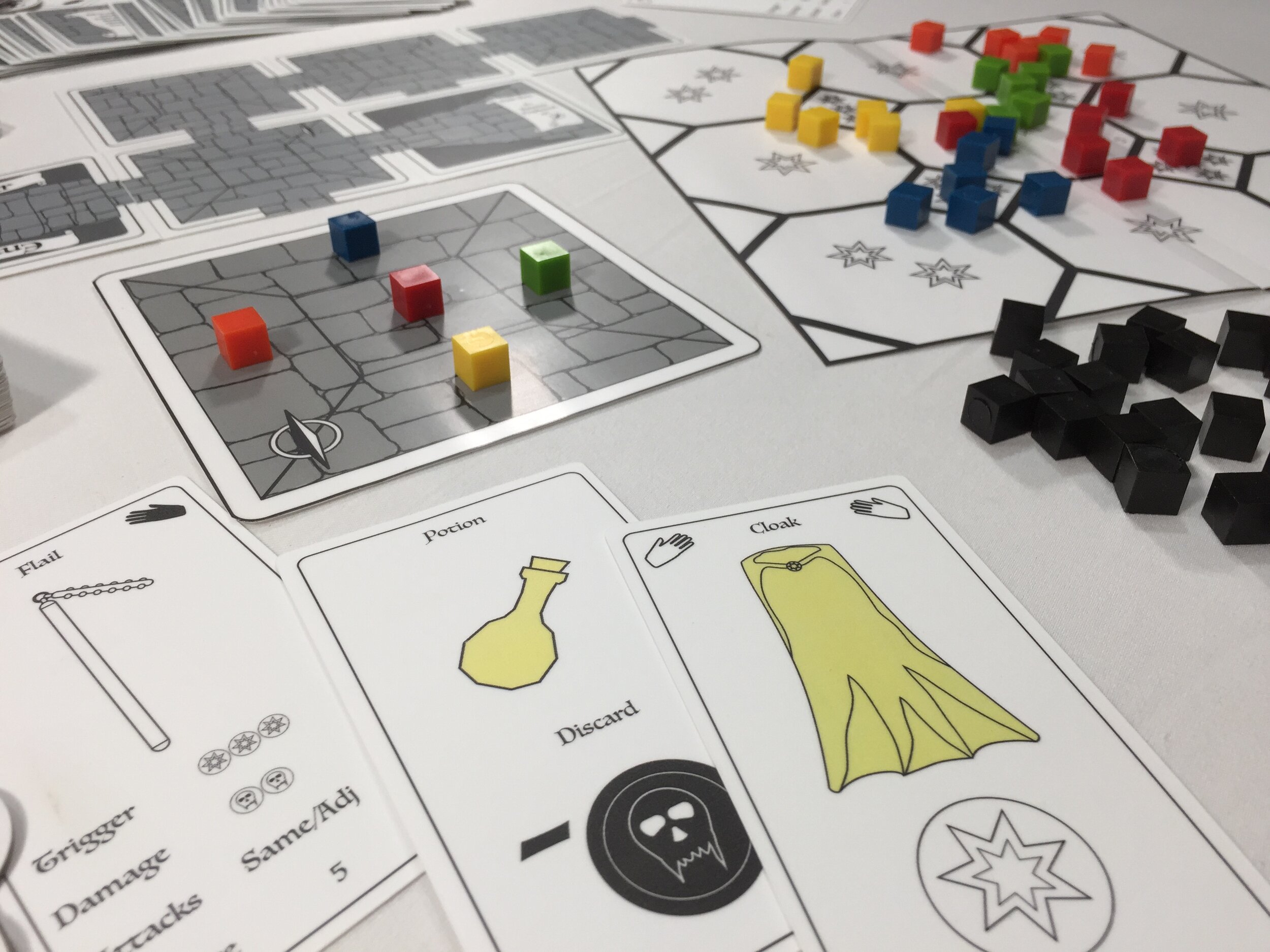
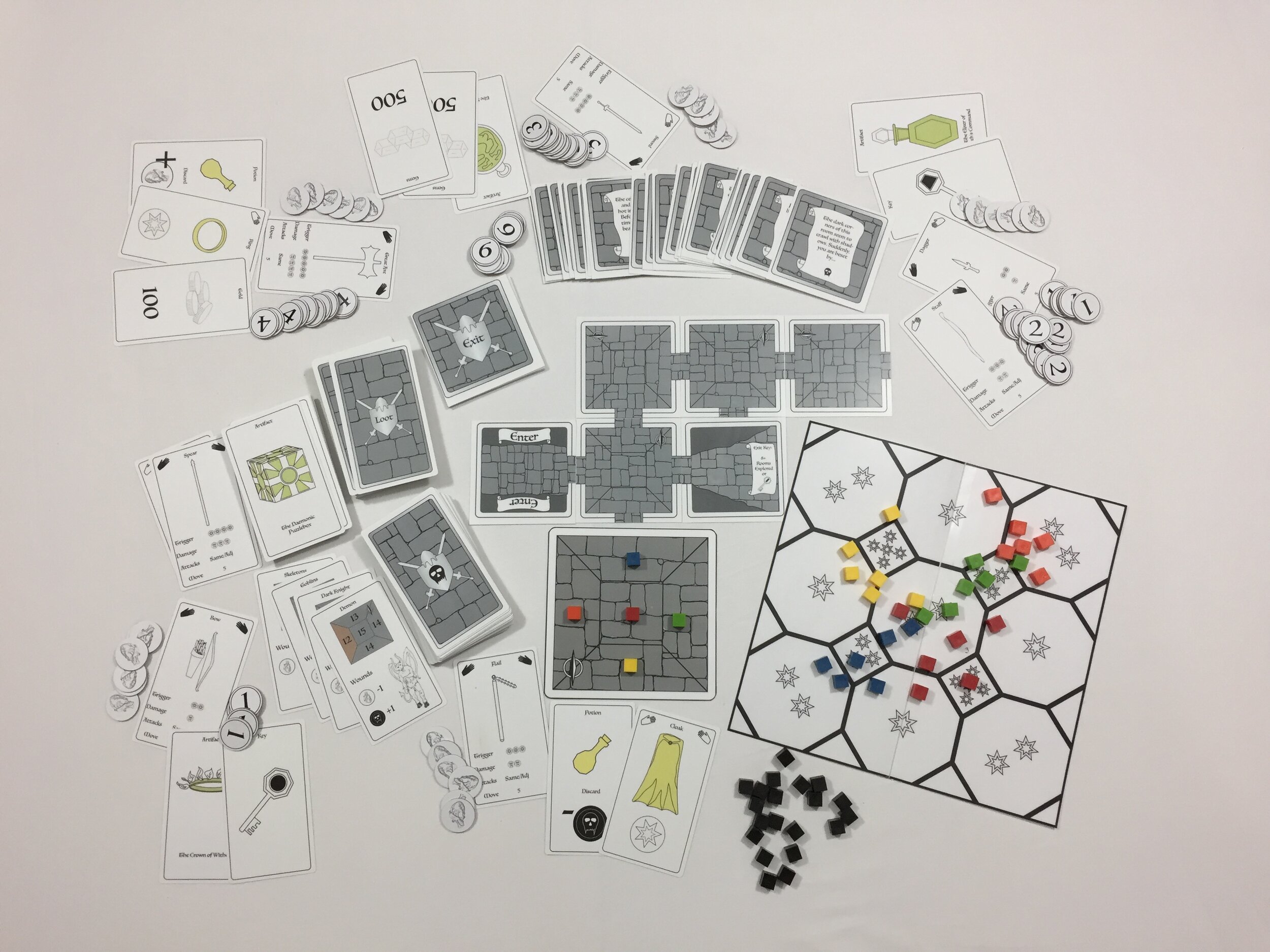
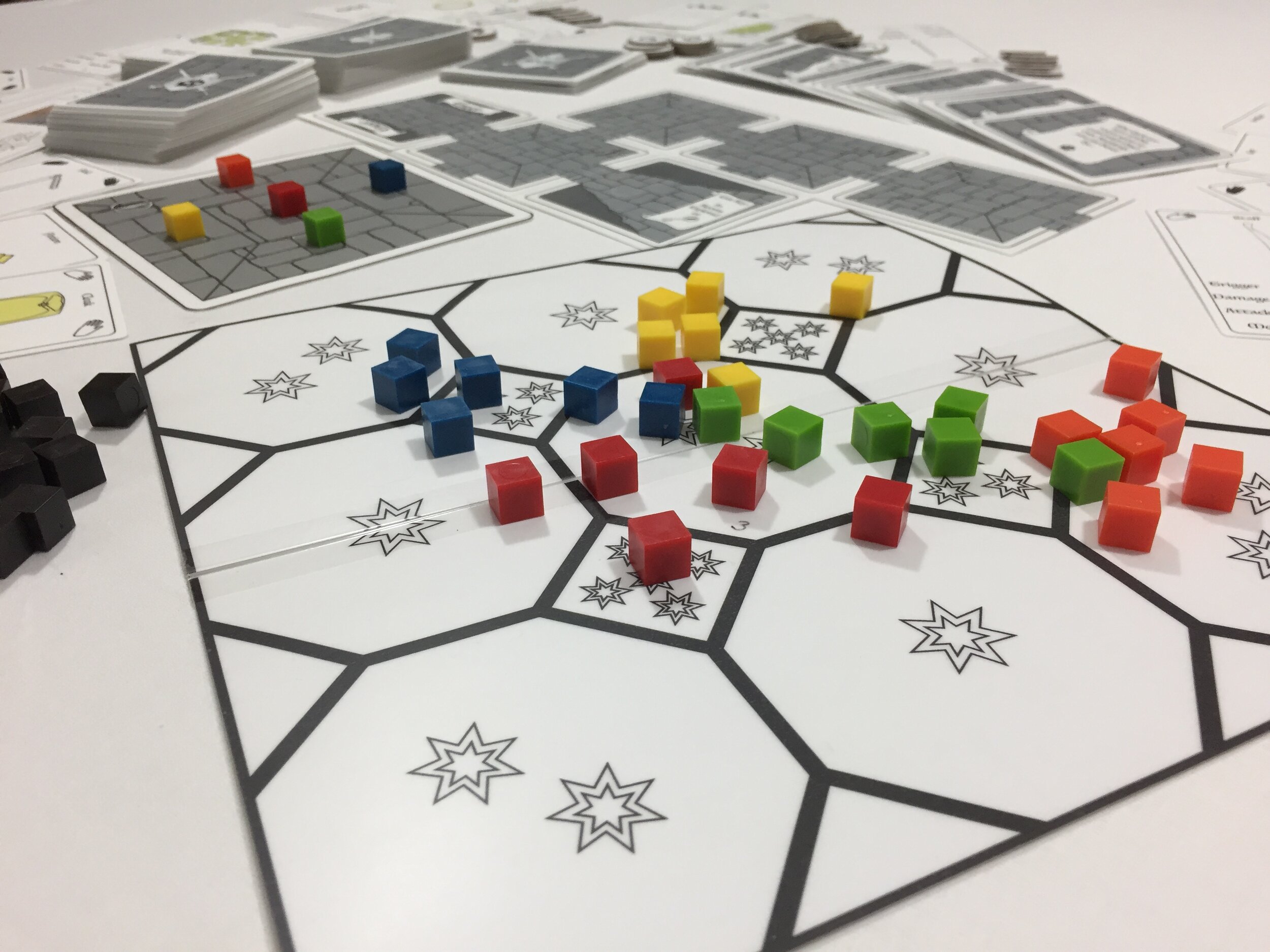
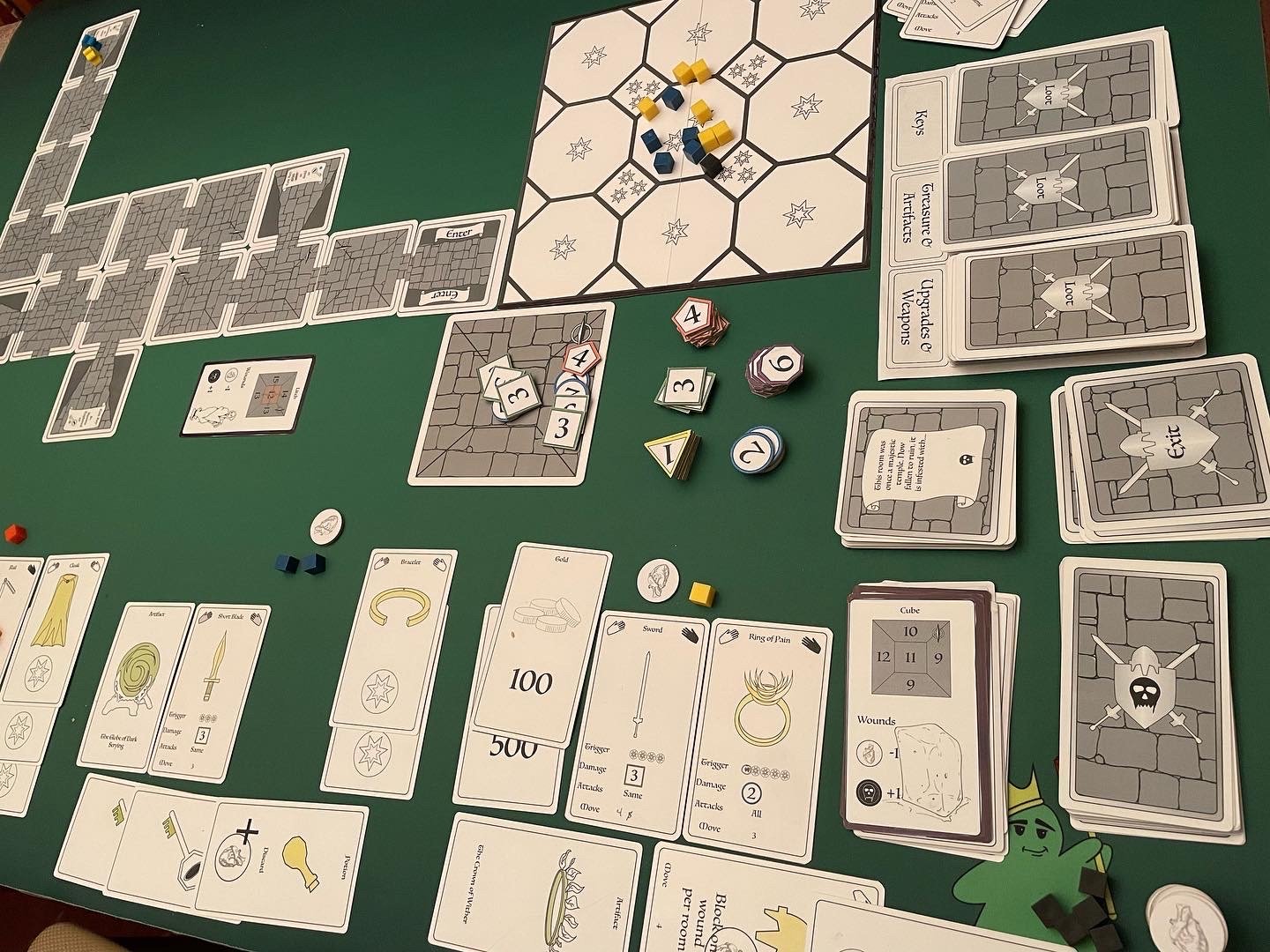
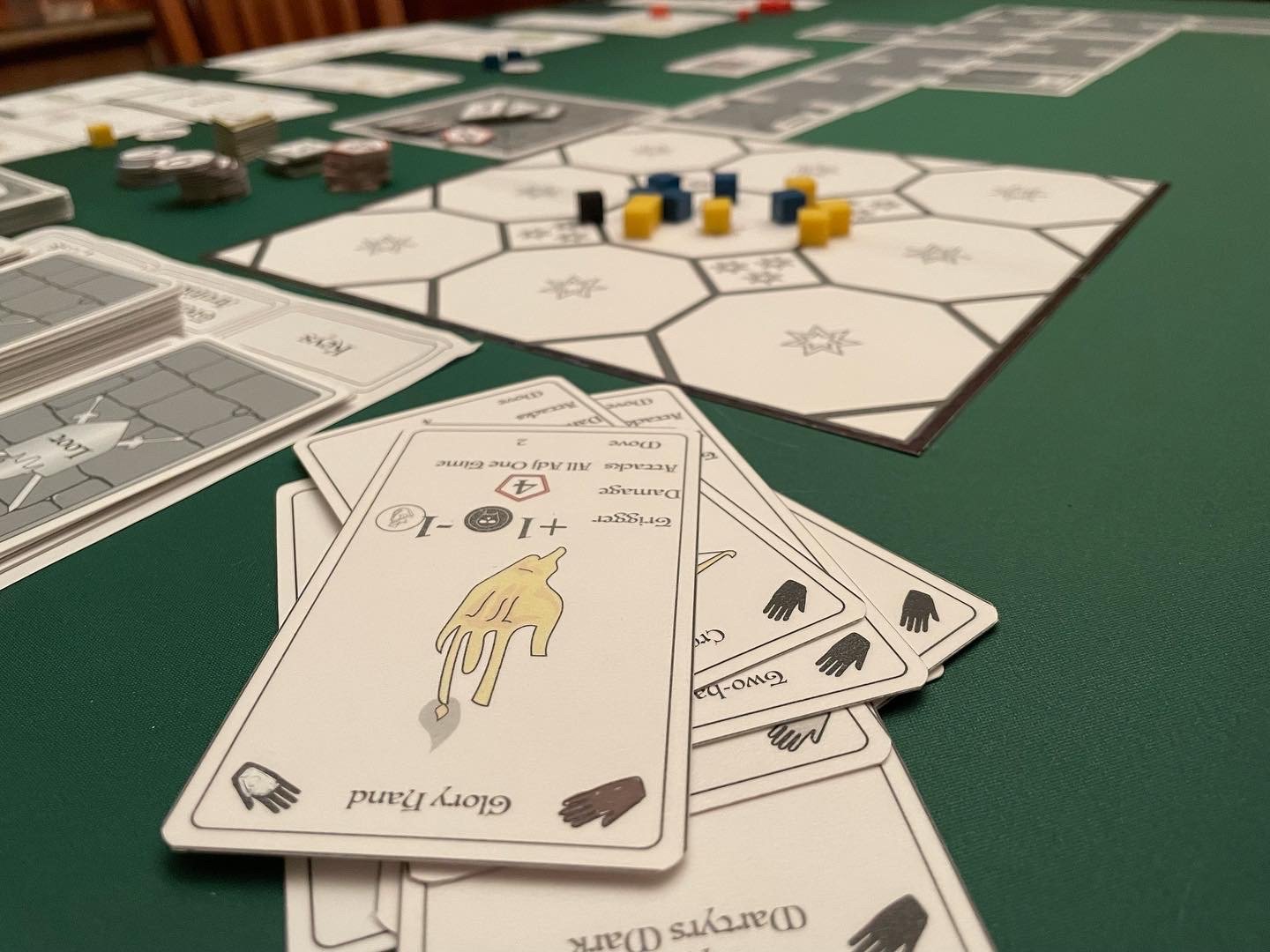
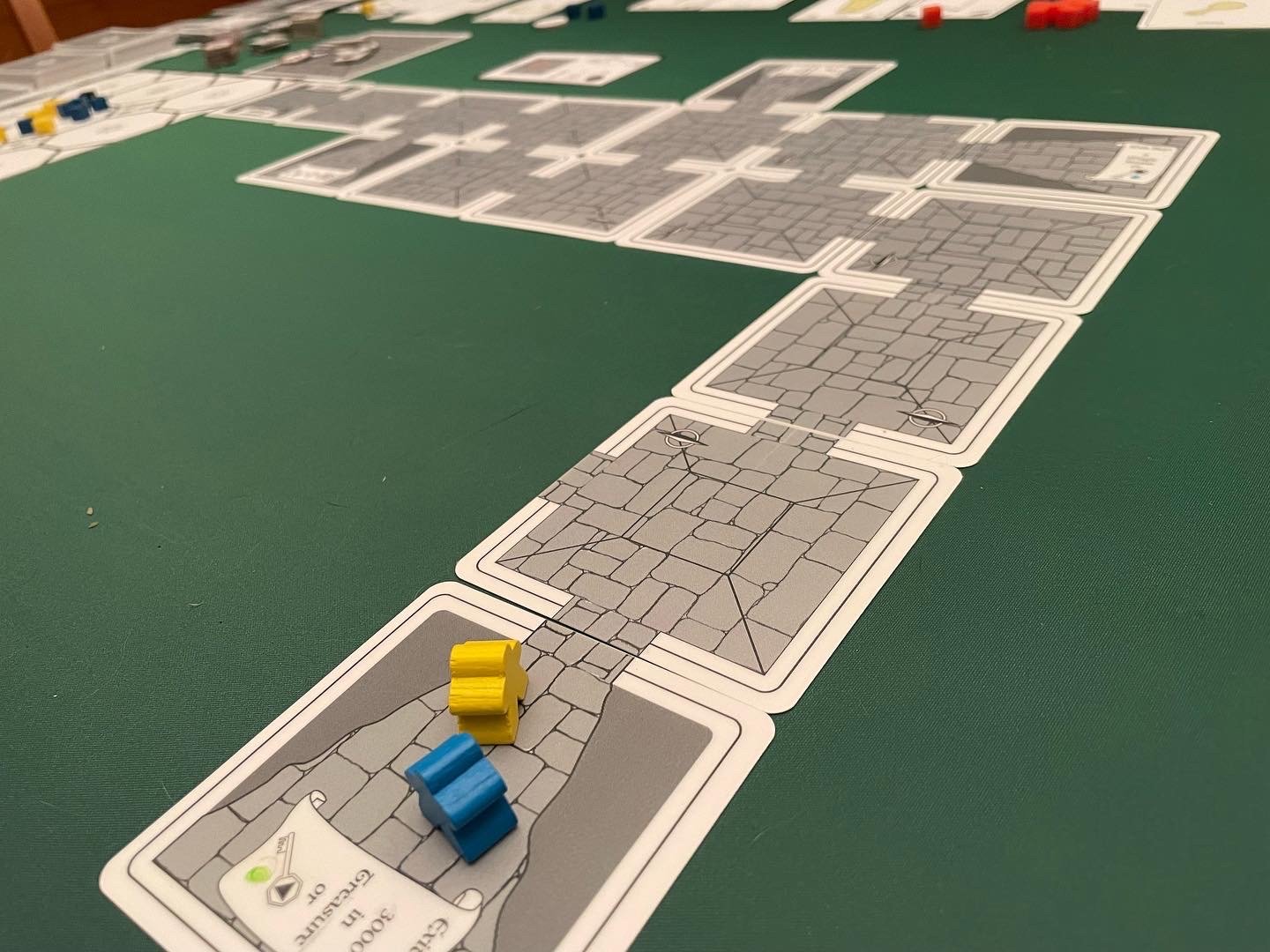
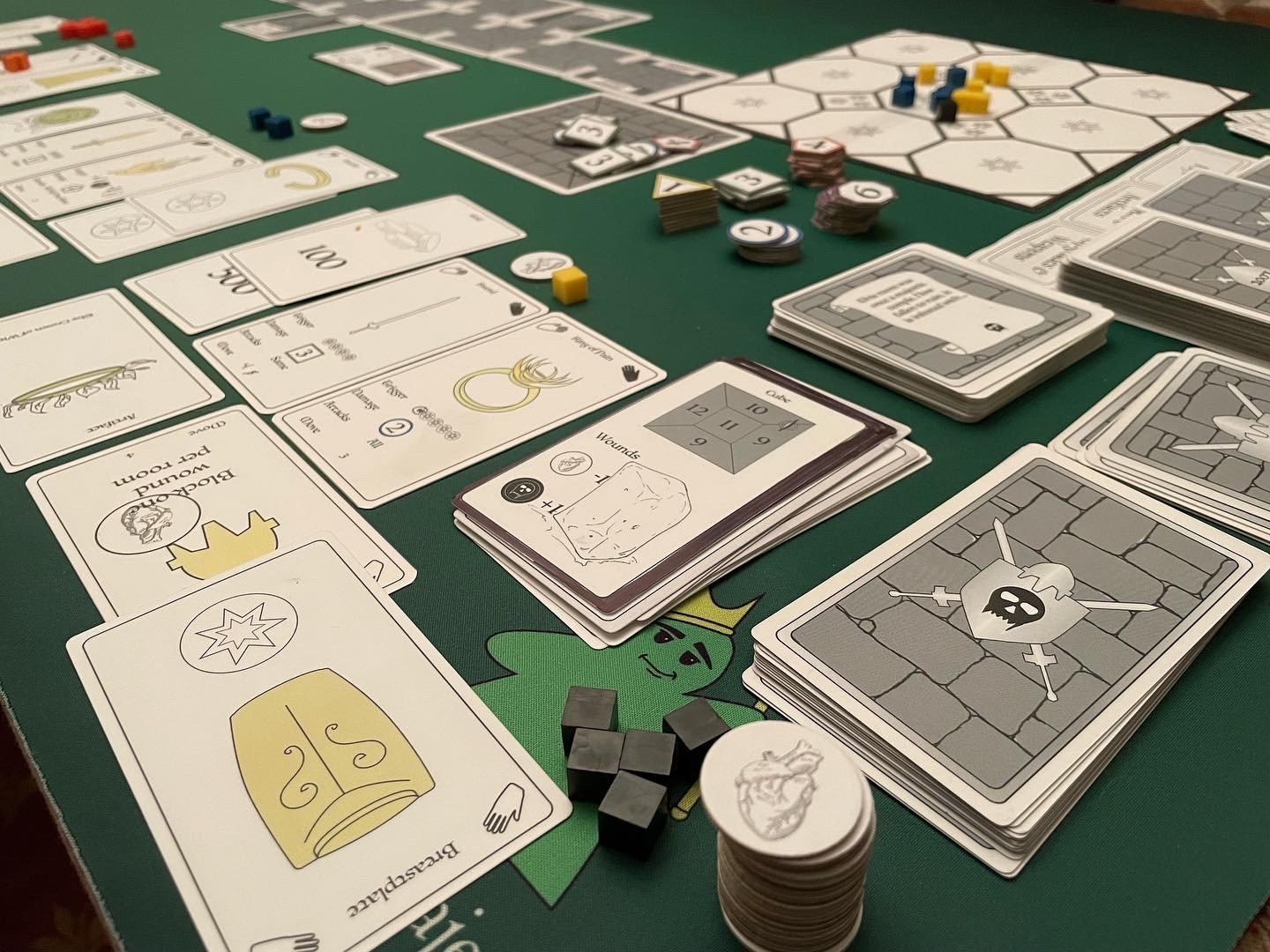
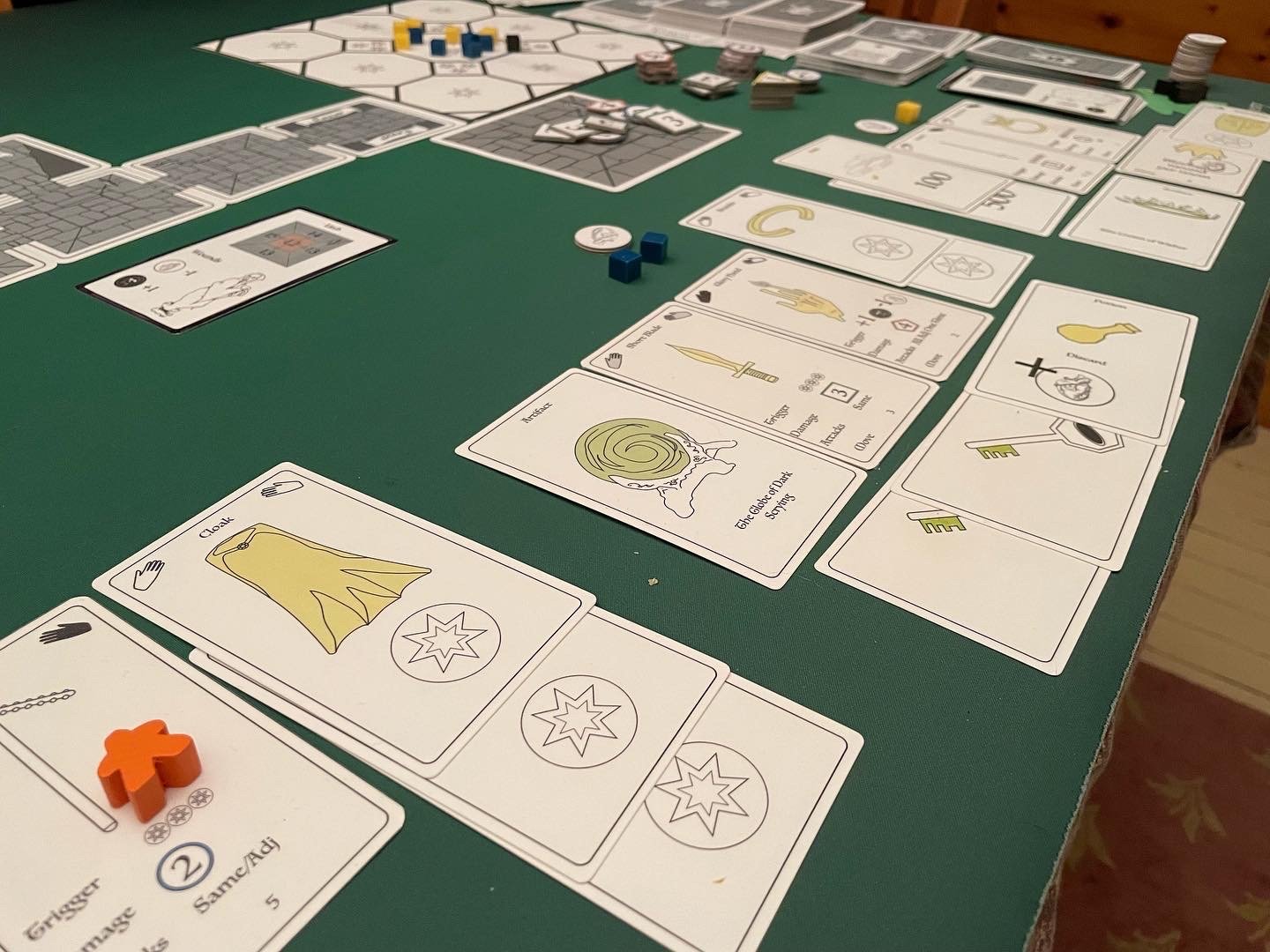
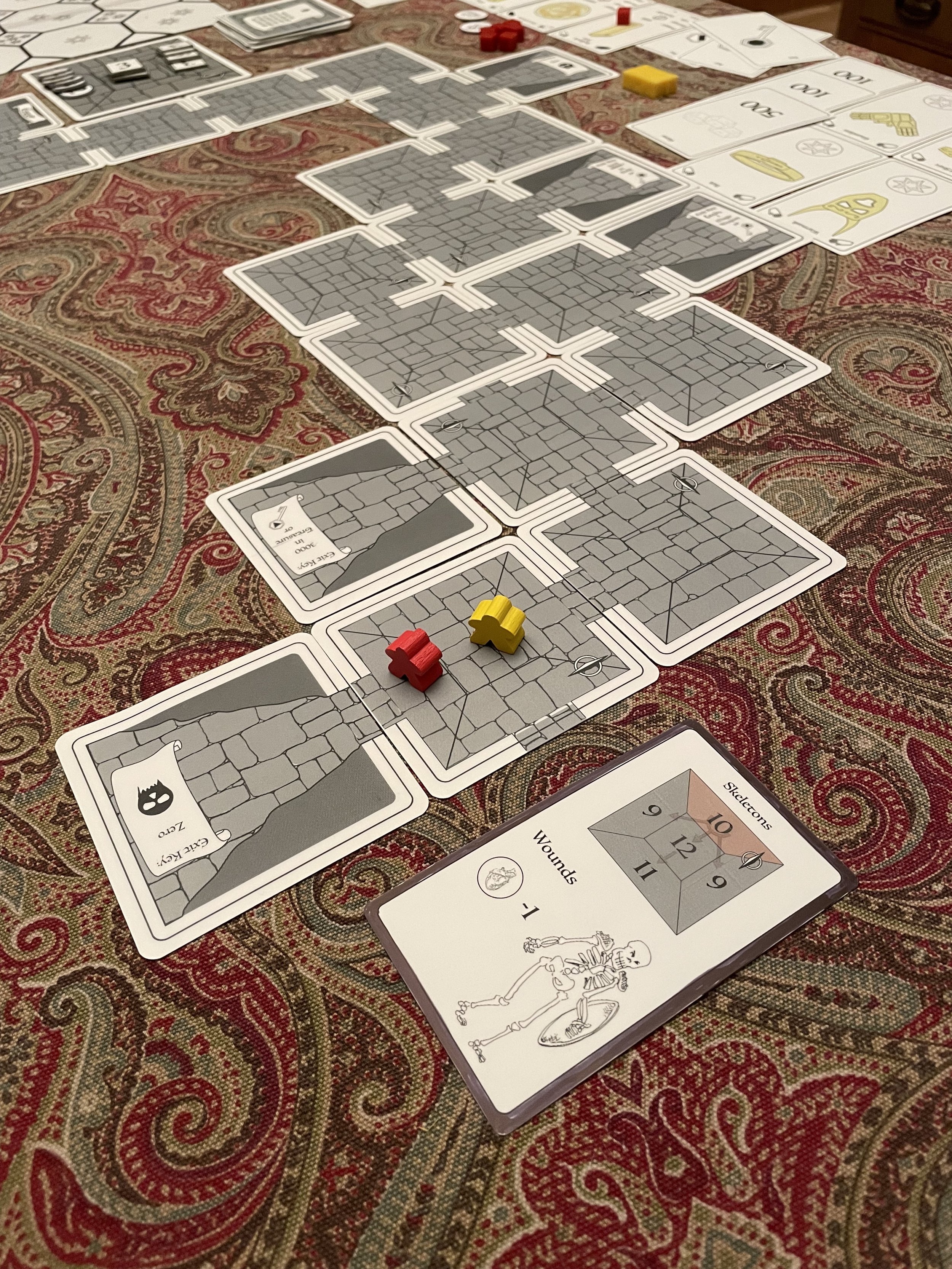
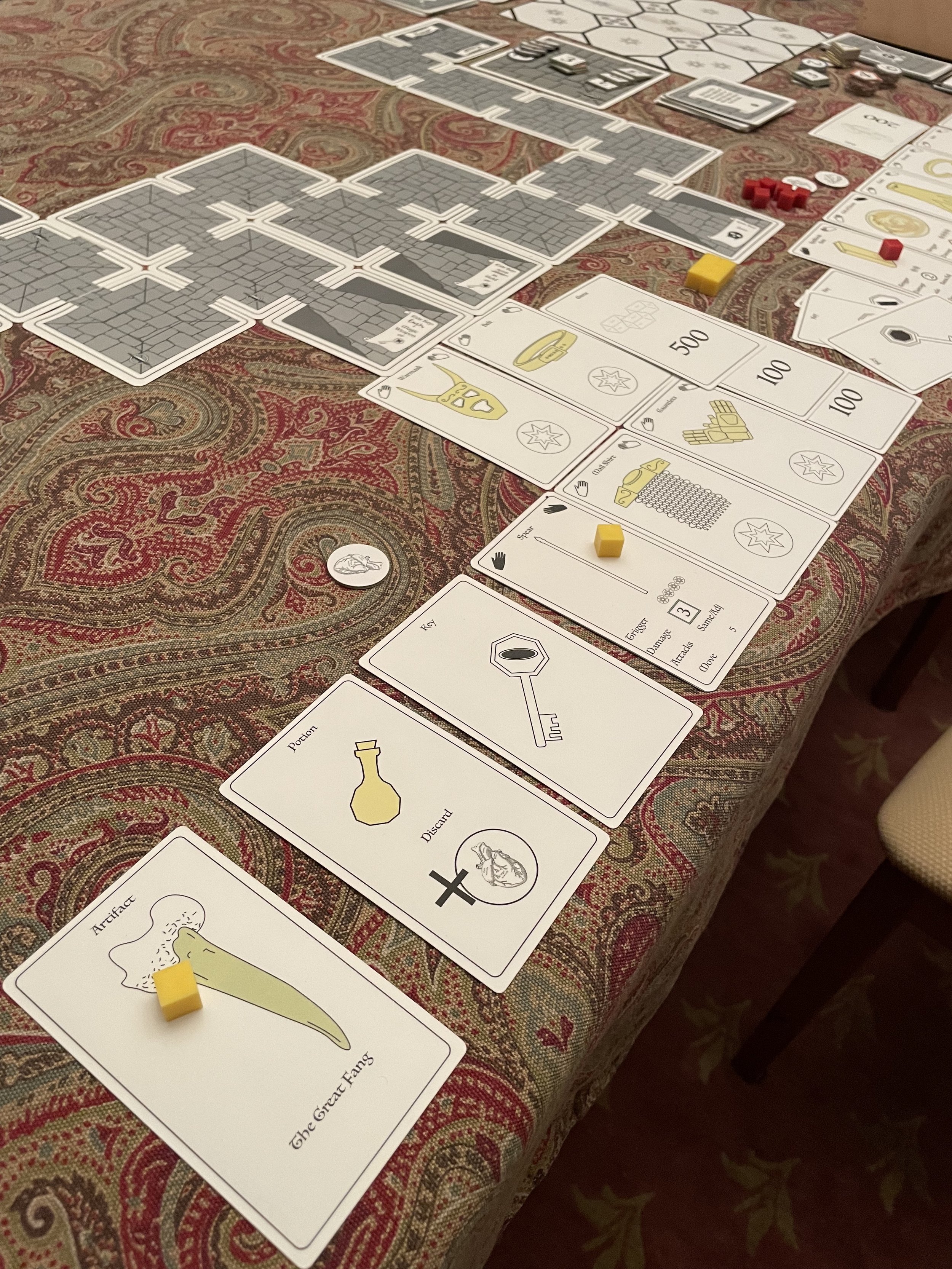
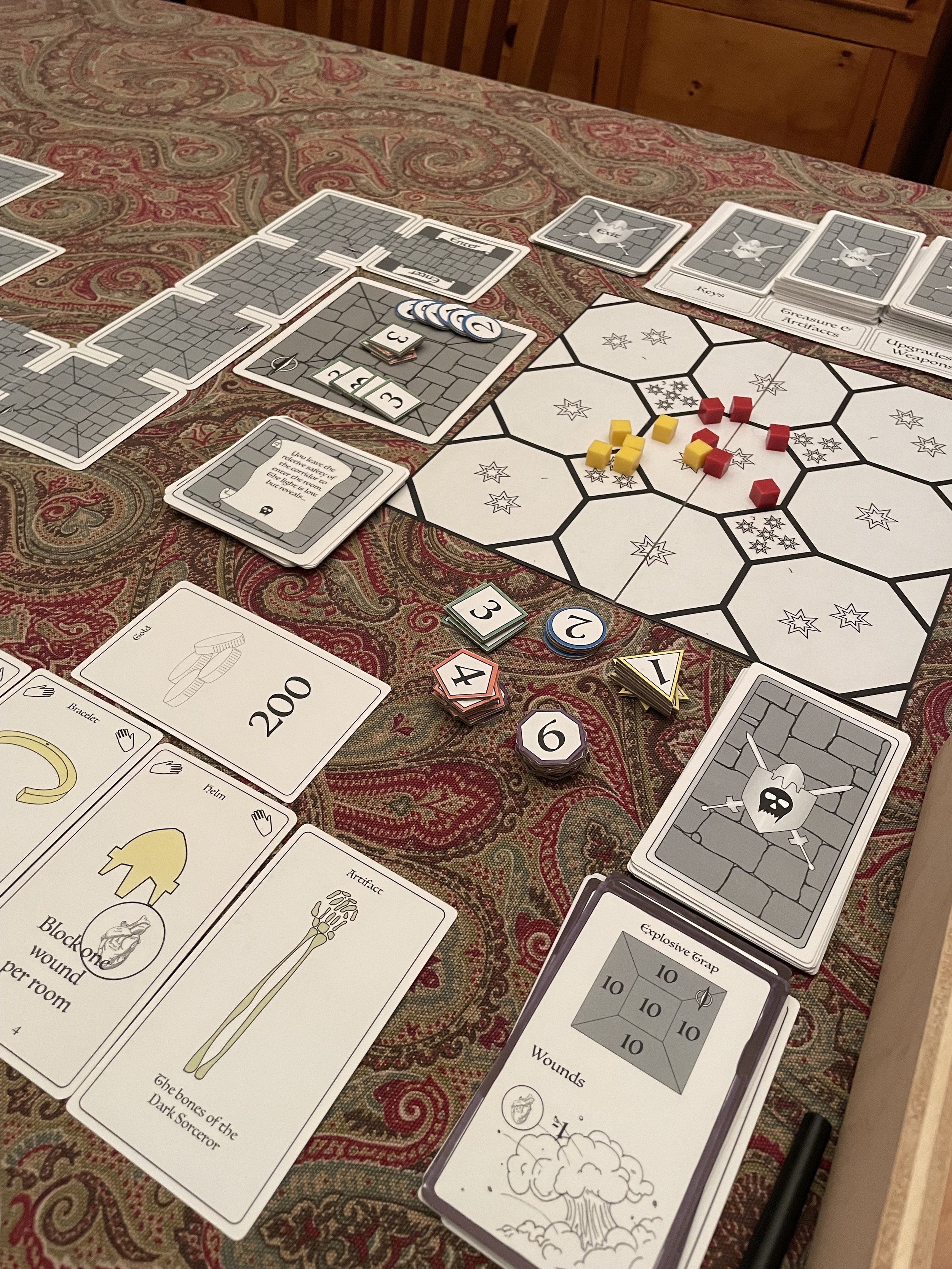
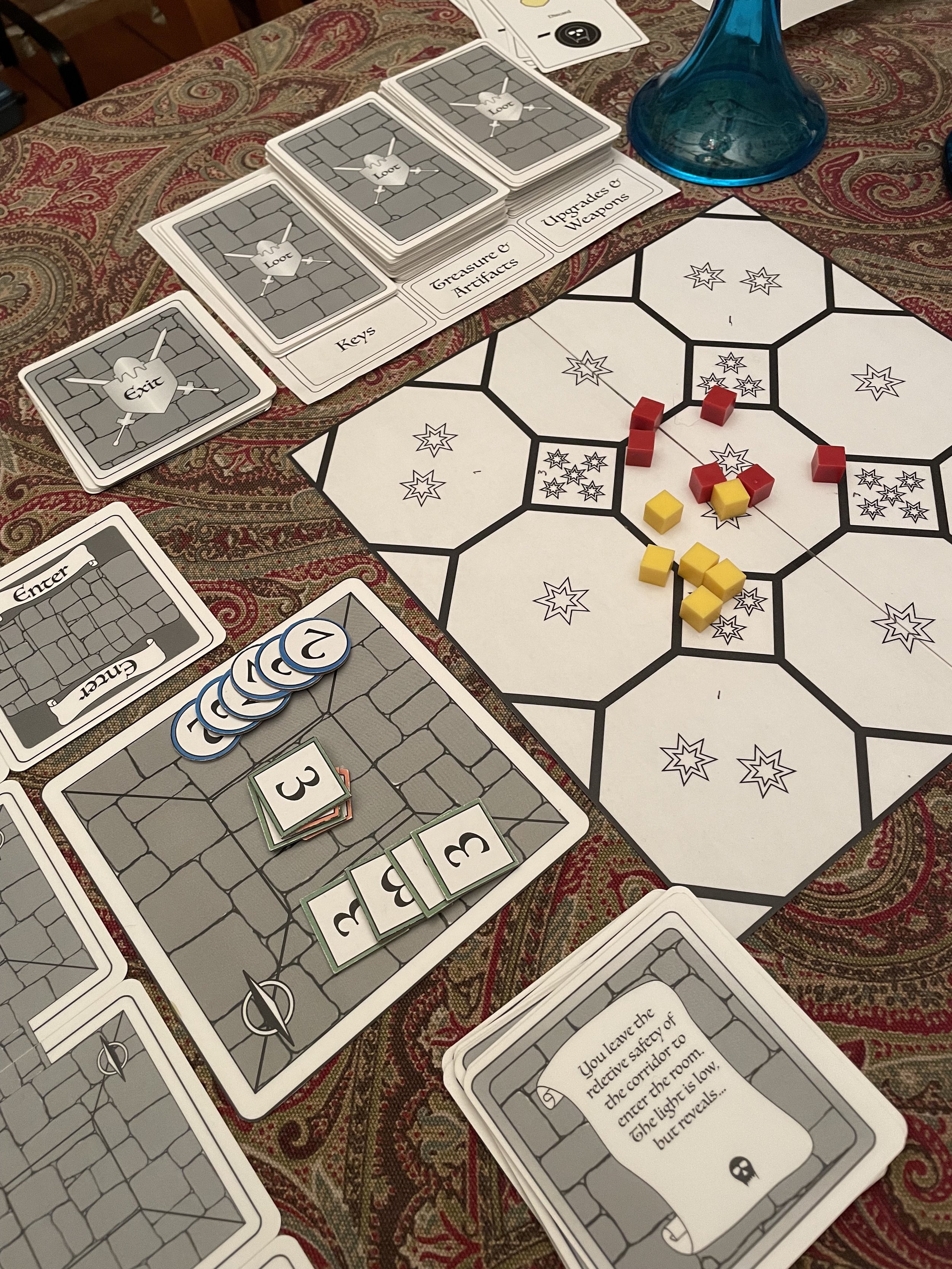
The Necromancer is dead, but the lands are blighted by the evil artifacts left behind. Journey into the tomb to remove the curse.
DarkQuest is a co-operative dungeon crawl with a dexterity element.
Roll your cubes on the Action Mat. Each cube that lands fully within a point area will give you action points you use to power your attacks. Collect enough points to trigger your weapon, and you deal damage to the enemy. Your position on the Battle Mat determines what area you will need to do battle in, and your opponents strength. Some weapons will allow you to assist other players who are adjacent to you on the Battle Mat.
Choose a starting weapon, but know that you will find other, more powerful ones along the way. You may decide to use the new one in place of what you had. Using a new weapon may change the nature of your character. You may start the game with the Battle Axe, swinging mightily at your foes, but later find a magic wand, and begin casting spells to aid yourself, as well as your friends. Other Loot may grant you extra action points when in your possession.
Defeat your enemies or suffer the consequences. Enemies may cause you physical wounds, which will lower your life points, or corruption, which replaces one of your cubes with a corrupt one. This corrupt cube will not generate you any action points. Collect a Healing or Anti-Corruption potion to counter these effects.
Progress through the dungeon until each player possessing an Artifact of the Necromancer. Only then may you exit the dungeon. Not an easy task, though. There must be an exit revealed for which you have the key. Either the actual Key or another requirement such as, an amount of treasure, or a magic weapon, or perhaps that no party member suffers from corruption. Only then can you safely leave the dungeon of the Necromancer.
SPECS
Conceived March 2017
Cooperative Play
1-5 Players
Co-op dungeon crawl
Being play tested
GENESIS
I wanted to explore using dexterity in a game. The action of throwing something to generate a result has a certain physicality to it, and no matter the outcome, you feel like you were a part of it happening. Add into the mix several people throwing objects onto a shared space and you add all kinds of chaos. My hope is that by forcing the players to all throw their cubes onto the same mat it will generate another level of co-operative participation. How will you throw the cubes? All at once? One player at a time? Maybe one player throws all the cubes? It may generate some interesting in-game discussion.
I am always drawn to dungeon themes. Choose your character and head off into the danger of the unknown. With this concept I wanted to challenge the idea of the character a bit. Each starting weapon has a specific idea of “who” would use it. The Battle Axe, it’s a fighter’s first choice! The Mace, the holy cleric. A staff and dagger, hello wizard. During the game player draw Loot cards. The deck contains other weapons that may alter the perceived class of the character. If that fighter draws and equips the “Wand of Fireball” is he still a fighter? Or has something intrinsic changed? The assignment of character in the game is a relatively small part, but for those players that find if important, this mechanism could be pretty compelling. Do I want to change?
The action point system was also a new idea for me. Instead of having a weapon where the damage is variable, the damage is set, and it’s a matter of can I generate enough points to use it. Most weapons have a different trigger thresh hold, ranging from 2 to 6. Weapons with lower thresh holds will potentially trigger more often, but may not do as much cumulative damage.
Enemies are mostly your standard fantasy enemies. Trolls, Orcs, Skeletons. The damage system has the two components though. There is health loss, and corruption. Lose all your health, and you are out of the game. Corruption lowers your ability to generate Action Points. Neither one is good. Damage occurs at the beginning of a round. If you haven’t generated enough cumulative damage on your section of the Battle Mat, you will take damage from the enemy. The Battle Mat and Room Placement mechanisms allow players to make decisions about where damage could be placed. if you have a weapon that allows you to attack adjacent areas of the room, you can opt to place damage you generate on another players area. If one player is in dire straights, maybe this round they need a little help battling the skeletons in this room. Maybe this will keep them alive until the next room? Another area where player interaction is encouraged.
GAME PLAY
Each player chooses a starting weapon, Battle Axe, Bow and Arrows, Dagger, Sword, Mace, Flail, Spear, or staff. Some weapons may be paired. Some may allow attacks to adjacent areas as well as your own. There are limited starting cards, so the party must decide who is taking what collectively. Each player takes a set of 6 same colored cubes, and a number of health tokens based on the number of players. The Battle Mat, Action Nat, and Damage Counters are placed out on the play area. Corruption cubes are put out as well. The Loot decks (Weapons & Upgrades, Treasure & Artifacts, and Keys) are shuffled, Enemies, room tiles, and exit tiles are shuffled as well, and all are placed on the play area.
The tomb is generated from the randomized pile of room tiles. Each room has a number of doorways, so there are spatial options for building the dungeon. Once a new room is placed, if there is more that one other doorway leading out of the room, a random exit is placed at one of the open doorways. For example: a room with three doorways is placed. One doorway will be the entrance of the next room tile. The other doorway gets an Exit tile placed. This becomes a possible exit for the party to leave by.
Players choose which of the 5 room areas their character will occupy by placing the meeple matching their cube color on the room tile in the area they choose. Discussion about placement may be helpful as some weapons will allow player to attack adjacent areas. Once all players have placed their meeple, an Enemy card is drawn. This card will illustrate the type of enemy, the strength of the enemy in each of the 5 areas, if there are any special combat situations, and the damage the enemy does.
All players roll their cubes on the Action Mat to determine their Action Points. For a cube to generate Action Points it must occupy only one area on the Action Mat. If any part of the cube touches the white of an adjacent area, it does not generate any points. All players count up their Action Points, including any they may get from Loot cards from previous rooms. Once these are calculated they are compared to their weapon card’s trigger value (some weapons and items may activate with another type of trigger). If the points meet or exceed the Trigger of the weapon they may do the amount of damage listed on the card. Damage counters are placed in the corresponding target areas on the Battle Mat. If at the end of the round the damage total on any of the areas of the Battle Board meets or exceeds the value on the corresponding area of the Enemy card, that area is free of enemies, and may be ignored for the rest of this fight. Once all areas are free of enemies, the combat is over. Each player now draws a card from one of the Loot Decks. These cards include Magic Weapons, Equipment, Potions, Gold, Gems, Artifacts, or Keys depending on the deck..
The goal of the players is to each have at least one Artifact card in their inventory and to leave the dungeon alive. If all players have an Artifact they may now find an exit to leave by. By now several of the rooms will have exits placed at doorways, but players cannot back track through the tomb, those exits are no longer available to use. If the party is in a room with a matching Key, or meet the alternate requirement for the exit, they may leave the tomb, victorious! Ridding the land of part of the Necromancer’s fouls legacy.
